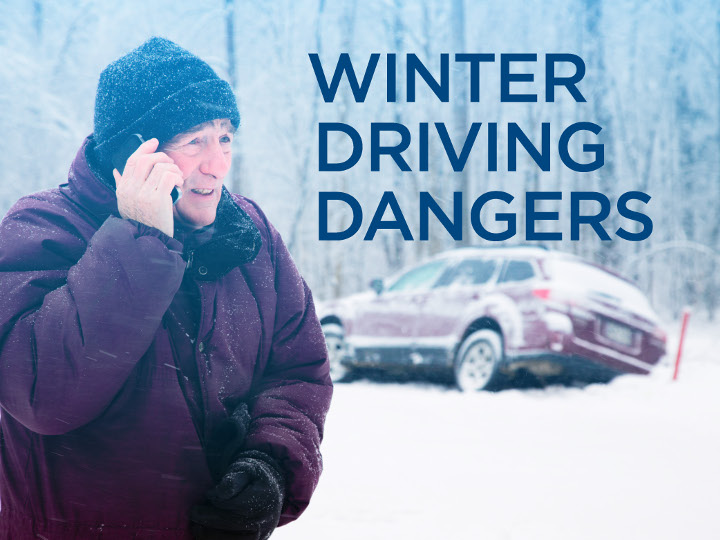- Home
- Loss Control
- Loss Control Insights
- Protect Yourself While Driving This Winter
“Be prepared” is a good motto for driving in any weather and traffic conditions, but EMC Risk Improvement Representative Renee Andres emphasizes that planning is especially important in winter driving conditions that may hinder your travels. As someone who is on the road much of the time, and who lives in wintery Minnesota, Renee has lived through many cold, snowy and icy road trips.
Renee recommends prepping your vehicle for winter driving and taking special care while driving in winter weather.
In addition, she recommends stocking your vehicle with a winter safety kit. Your kit may be made up of different items depending on your type of driving. If your day-to-day driving is mainly on city streets, with numerous safe locations such as offices or gas stations along the way, your winter safety pack will contain fewer items than if you are taking long trips or driving in rural areas.
Winter Survival Kit
When Renee travels anywhere in winter, she always has heavy boots, a warm down parka, a hat and gloves. If she is traveling in more remote areas or on longer journeys, she adds items to her safety kit. She advises considering where you’re heading and what you might need in order to survive in a worst-case scenario. If possible, store these items in the vehicle, not in the trunk, for easier access. These items may include:
- Metal drinking cup to melt snow, along with a candle and waterproof matches or a fire starter
- Food, such as candy bars, granola bars or nuts
- A blanket, such as a space blanket or even a sleeping bag
- Emergency road flares (these are required for commercial vehicles)
- A flashlight and extra batteries
- Something for traction, such as mats, kitty litter or floor sweep
- A shovel, either a large one or a fold-up type
- Cell phone charger
- First aid kit, including a pocket knife and any medications you might need if stranded
- Windshield scraper and brush
- Battery jumper cables
Your kit should include items to help you get yourself out of danger, and to keep you safe while waiting for assistance. Renee says, “You can’t assume that you will be immediately rescued by someone in a vehicle driving by or after calling 911 or AAA. You may have to wait for hours before help arrives. And if the weather conditions are extremely dangerous or you are in a remote location, it could be even longer.”
Coping With an Accident
Winter accidents can occur because of ice and snow, poor visibility or for other reasons, too. Again, Renee stresses that there are several ways of handling accidents, depending on where the accident occurs and how dangerous the accident is.
If the accident is merely a fender bender and it’s possible to move your vehicle off the road, do so, especially if the highway is busy. If your vehicle is not drivable, the safest place is in your vehicle or in another vehicle close by. Getting out of your vehicle may place you in danger of sliding or swerving vehicles, and waiting in the cold or snow may also endanger you.
In either case, call 911 for assistance as soon as it’s safe to do so and turn on your hazard lights immediately. Other steps you can take if it’s safe to leave your vehicle include:
- Take photos of the vehicles, your location and anything that may have contributed to the accident, such as a fallen tree or icy streets
- Preserve any evidence
- Document the weather and road conditions and what happened, such as skidding on a patch of ice or sliding into another vehicle
- Exchange insurance information, license plate numbers, names and contact information of other drivers involved, and do not admit fault to anyone
If your accident is in a more remote area, contact emergency responders immediately, knowing you may have to wait some time before help arrives. Get off the road if possible. From there, check whether you have a fuel leak or if your exhaust pipe is in a snow bank. If so, you may need to evacuate your vehicle. If you are able to remain in your vehicle, your safety kit should have items to keep you warm, help you keep in touch with the outside world and make your vehicle as visible as possible to others driving by.
Get in touch
Need help? We’re here for you! Whether you have questions or need personalized assistance, your local office is ready to support you.
Loss Control Insights
Stay informed with the latest news and receive actionable safety tips, all carefully curated by our team of experts.
